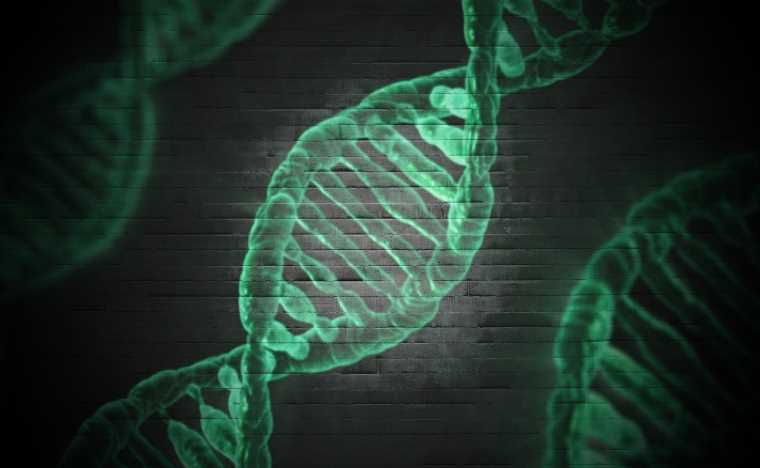In a groundbreaking study, genes from regenerative organisms were found to rejuvenate intestinal stem cells in common fruit flies.
Researchers at the University of Tokyo’s Graduate School of Pharmaceutical Sciences studying the effects of cellular regeneration on aging found that adding regenerative genes from one species of multicellular animal with the ability to continually regrow stem cells to another that lacked the ability resulted in significant gains in stem cell regrowth.
The team found that inserting such high regenerative genes into the intestinal tract of low-regenerative adult fruit flies yielded a significant increase in life span. According to the researchers who conducted the study, their findings suggest that genes specific to animals with this high regenerative ability may help uncover new ways of extending the healthy lifespan of organisms that lack these genes, including humans.
“In animals capable of whole-body regeneration, such as flatworms and jellyfish, specific genes may help allow regeneration and maintain long-term stem cell functions,” explained the study’s lead researcher, Associate Professor Yu-ichiro Nakajima, in a recent press release. “Conversely, mammals and insects with limited regenerative abilities may have lost these genes during evolution. [However] it is unclear whether reintroducing these regeneration-associated genes in low regenerative animals could affect their regeneration and aging processes.”
Regenerative Genes in Nature
Many metazoans, multicellular organisms with tissue and organ systems, can regrow entire limbs through complex rejuvenation processes. Yet once evolution moves away from simple creatures like planarians, a type of flatworm, to more intricate species like mammals and even insects, this ability tends to significantly degrade, especially with age. Simply put, the older, more complex creatures like humans become, the more likely they are to die.
According to the researchers behind this new study, published in the journal BMC Biology, it doesn’t have to be this way. In fact, the team cites other recent research identifying a species of jellyfish as potentially immortal due to its whole-body regenerative capability as inspiration.
To determine if transferring these highly regenerative genes via stem cells to another organism would have a measurable benefit, the University of Tokyo researchers focused on a specific set of genes they suspected of imparting these regenerative abilities.
“We focused on the group of genes unique to animals with high regenerative capacity, named highly regenerative species-specific JmjC domain-encoding genes (HRJDs), and transferred them into the fruit fly Drosophila melanogaster, to test their effects,” Nakajima said.


Credit: ©2024 Yuichiro Nakajima CC-BY-ND
The source of these genes was a flatworm, also known as a planarian, that only needs a small piece of itself to survive in order to regrow a whole new body. In this study, the University of Tokyo team isolated the planarian’s HRJDs, which they believe are likely to be correlated to the animal’s remarkable caliber of regeneration. To support this idea, they found that certain HRJDs seem to be common in multiple species with highly regenerative cells and that certain groups of these species point to a common ancestor.
Unfortunately, it appears that these genes disappeared from other species over long evolutionary periods. According to the press release, this caused the team to ask, “What would happen if a low regenerative species, which has lost HRJDS, were to acquire them again?”
Transferring Regenerative Ability Across Species
Working from this premise, Nakajima’s team devised an experiment. According to the study, the selected regenerative genes were added to the fruit fly species Drosophila melanogaster, “which lost HRJD genes during evolution” at various stages of development, from larvae to adult.
Notably, no effects of the procedure were immediately apparent, as the flies were neither killed nor were they noticed to gain any significant body mass. Measurement of various appendages over their development period, from the wings to the eyes, also showed no measurable variance due to the new genes.
When it came to the main focus, the regenerative effect of the HRJDs, the results were mixed but encouraging. First, little impact was seen on the regeneration of the wing disc in adults or its initial development in growing fruit flies. Also, continual expression of HRJDs in developing flies actually decreased their life spans rather than increasing them. However, when introduced in adults, the HRJDs correlated to increased intestinal barrier integrity. This was notable, the researchers say, as intestinal barriers usually erode with age. In this case, the gene’s benefits appeared to result in an increased life span.
“HRJDs promoted greater intestinal stem cell division whilst also suppressing intestinal cells that were mis-differentiating or going wrong in aged flies,” Nakajima explained. “This is in contrast to the use of antibiotics, for example, which might suppress mis-differentiated intestinal cells but also suppress intestinal stem cell division. For this reason, HRJDs had a measurable effect on the lifespans of fruit flies.”
According to Nakajima, this finding opens the door, “or at least provides clues,” for the development of new anti-aging strategies. “After all, human and insect intestines have surprisingly much in common on a cellular level,” the professor quipped.
The Future of Anti-Aging
In their conclusions, the study’s researchers note that a variety of questions arise around why certain body parts and developmental stages of the fruit flies reacted positively to gene therapy while others did not. One possibility that they proposed was the HRJDs were acting in concert with other genes in ways that require further investigation into various pairings. Another possibility is that strict induction parameters may be necessary for the genes to be successfully taken in. Either way, the researchers involved believe that more study of unresolved questions around the benefits of these types of regenerative genes is needed to support and expand upon their initial findings.
“Details of the molecular workings of HRJDs are still unresolved,” Nakajima said. “And it’s unclear whether they work alone or in combination with some other component. Therefore, this is just the start of the journey, but we know now that our modified fruit flies can serve as a valuable resource to uncover unprecedented mechanisms of stem cell rejuvenation in the future. In humans, intestinal stem cells decrease in activity with age, so this research is a promising avenue for stem cell-based therapies.”
Ryan Whalen covers science and technology for The Debrief. He holds a BA in History and a Master of Library and Information Science with a certificate in Data Science. He can be contacted at ryan@thedebrief.org.

